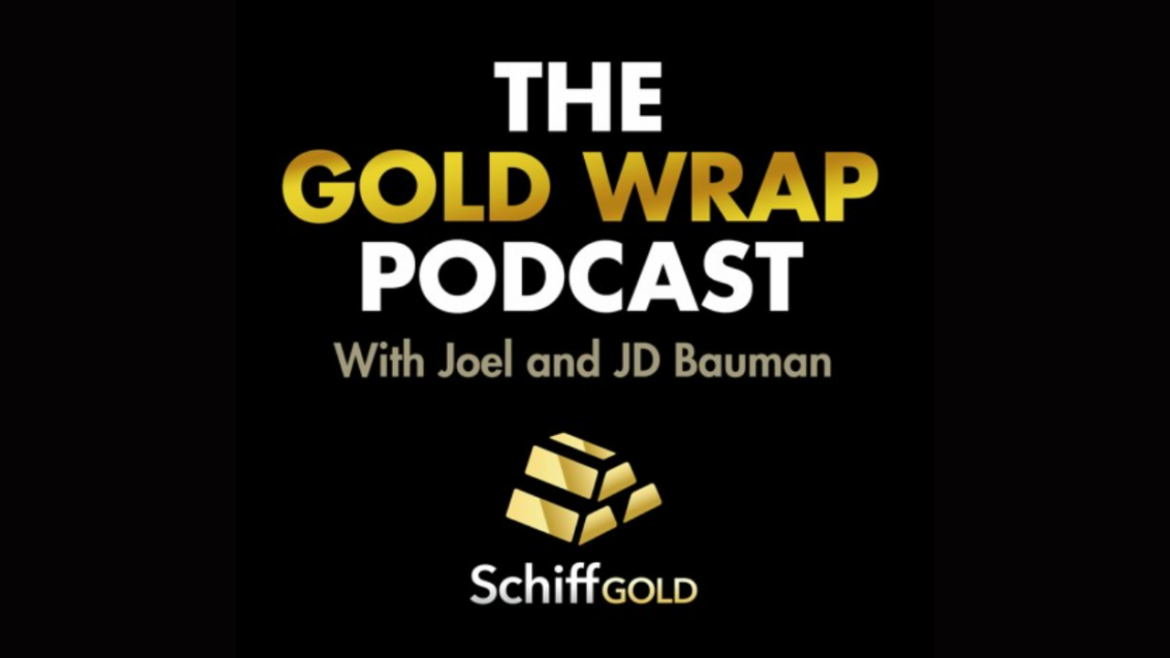Gold has all the potential to go unprecedentedly high. But silver will be gold on
Site:
Precious metals news
Are you ready to witness the potential explosion in silver prices?
Gold prices are up as mixed economic signals emerged from the U.S., prompting optimism about a potential "soft landing" for the economy amid ongoing Federal Reserve efforts to combat inflation. The metal saw a 1% rise on Monday, recovering after two consecutive weeks of losses—the first since February. This rebound reflects investor reactions to a recent U.S. jobs report, which suggested a slowing economy and alleviated fears of a recession coupled with high inflation. Chicago Fed President Austan Goolsbee indicated that such data trends could support a case for easing monetary policy this year. Despite these challenges, gold has surged approximately 12% this year, bolstered by central bank purchases, demand from Asian markets, and safe-haven buying due to geopolitical tensions.
 Weak U.S. Jobs Report Boosts Gold Prices As Many Speculate About Fed Rate Cuts
Weak U.S. Jobs Report Boosts Gold Prices As Many Speculate About Fed Rate CutsMay 6, 2024 - 09:50:10 EDT
Gold prices rose on Monday due to a weakening U.S. dollar, following a disappointing U.S. jobs report that raised the possibility of the Federal Reserve cutting interest rates. Spot gold increased by 0.8% to $2,320.33 per ounce, while U.S. gold futures rose by 0.9% to $2,329.10. The underwhelming job growth and slowing wage increases suggest room for potential rate reductions by the Fed in 2024, according to Ricardo Evangelista, a senior analyst at ActivTrades.
After the Silver price broke out above the Daily Falling Wedge today, what's next? That's a good question. That's why I wanted to provide a quick update on what the technical charts show for Silver in the short term. Interestingly, the charts show both a Bullish & Bearish short-term setup...
 GOLD MARKET UPDATE MAY 2024: While Investors Are Buying Bitcoin, Central Banks Continue To Acquire Only Gold
GOLD MARKET UPDATE MAY 2024: While Investors Are Buying Bitcoin, Central Banks Continue To Acquire Only GoldMay 5, 2024
If you are a Central bank, you are buying Gold, not Bitcoin. Central banks have purchased a record amount of Gold over the past two years, and this trend continues in 2024. Central banks rely upon the stable, less volatile 2,500-year history of the king monetary metal over the highly speculative Bitcoin...
In April, the U.S. economy added a disappointing 175,000 jobs, falling short of expectations and nudging unemployment up to 3.9% (see current trends here). This signals a slowing economy that might force the Federal Reserve to put the guard rails back on. Our guest commentator gives a deeper look at a worrisome trajectory: while part-time jobs are on the rise, full-time employment has plummeted, hinting at a coming recession.
Cocoa prices have dumped since rocketing to a dramatic peak last month as an El Nino cycle winds down and traders rush out of the illiquid market. For now, depreciating fiat currencies are still keeping the cocoa price still far above its 2023 levels. Coffee has had a similar rise and subsequent correction — but now, inflation and other factors are conspiring to brew a pot of strong fuel for more upward price action in markets for the world’s other favorite bean.
Last week Scott Melker interviewed Peter on The Wolf of All Streets podcast. They have a friendly discussion about Bitcoin’s future, the differences between gold and crypto, and the overlap in the crypto and precious metals movements.
Over the last decade, many economists have promoted the use of debt to finance government spending, dismissing concerns about potential debt overhangs as advanced economies enjoyed low interest rates. However, the past two years have seen a significant shift in this perspective due to rising inflation and a return to normal long-term real interest rates. A recent reassessment by senior IMF economists highlights that with average debt-to-income ratios in advanced economies projected to rise to 120% of GDP by 2028 and higher borrowing costs becoming the norm, there is a pressing need for these nations to rebuild fiscal buffers and ensure the sustainability of their debt.
 Expect Continued High Interest Rates as Fed Seeks More Progress on Inflation
Expect Continued High Interest Rates as Fed Seeks More Progress on InflationMay 3, 2024 - 10:20:33 EDT
On Wednesday, the Federal Reserve maintained its interest rates, emphasizing the need for "greater confidence" that inflation will consistently approach the 2% target. Despite earlier hopes, inflation in early 2024 has exceeded expectations, leading to predictions that even if the Fed were to cut rates later this year, high interest rates on credit cards and mortgages are likely to persist through the end of 2024. Given the declining APYs on longer-term CDs and some high-yield savings accounts, now is an opportune moment to secure higher savings rates.
With inflation remaining high and interest rates elevated, reviewing your investment portfolio this May is more crucial than ever. Gold, which reached its highest investment level in over a decade last year and has been breaking price records recently, presents a unique opportunity. Unlike traditional assets like stocks and bonds, gold operates differently and offers distinct benefits. Considering the current economic conditions, there are several compelling reasons to consider adding gold to your portfolio this month.
Alvin Tan, head of Asia FX strategy at RBC Capital Markets and the top currency forecaster, predicts the yen could weaken to 165 per dollar, a level last seen in 1986. Despite Japan's potential interventions to support its currency, the significant interest rate gap between Japan and the U.S. continues to drive the yen's decline. Tan suggests that effective intervention would require coordination with the U.S., as the currency is expected to breach the 160 level and possibly reach 165 amid sustained bearish sentiment.
The Brookings Institute explores the complexities of measuring real pay, which adjusts nominal earnings for inflation. Given the variety of pay and inflation metrics used, determining trends in real pay can yield differing results. Our interactive tool allows users to select any starting quarter and compare annualized changes in real pay to the most recent data, using four different pay measures and two inflation indices. By interacting with the data, users can see how real pay has shifted over selected periods, helping clarify the relationship between wages and the cost of living.
In April, U.S. job growth fell short of expectations with only 175,000 jobs added, compared to the forecasted 240,000, while the unemployment rate rose to 3.9%, marking a deviation from the recent trend of robust employment gains. This shift could influence the Federal Reserve’s strategy on interest rate adjustments. Additionally, average hourly earnings increased by only 0.2% month-over-month and 3.9% year-over-year, figures that were also below expectations, suggesting subdued inflationary pressures. The broader labor market indicators, such as the more comprehensive unemployment rate and labor force participation, also reflected some softening, with the former reaching its highest level since November 2021 at 7.4%.
May 3, 2024 - 09:36:59 EDT
In a bold move to stabilize its currency, Japan is believed to have spent approximately ¥9 trillion ($59 billion) on market interventions over just four days, a move that traders and authorities have not officially confirmed. Despite these significant financial efforts, there are growing concerns among economists, traders, and businesses about the broader economic impact, as Japan's ageing and shrinking population continues to grapple with the after-effects of decades-long deflation. This large-scale intervention underscores the severe challenges the Japanese economy faces, and it may not prevent consumers from curbing their spending.
Recent interventions by Japanese officials to stabilize the yen have unsettled one of this year's most profitable financial strategies—carry trades. Typically, investors borrow yen due to its low yield and invest in higher-yielding emerging-market currencies. However, a spike in yen volatility to its highest level since July has led to losses this week, particularly affecting investments in the Indian rupee and Colombian peso. Data indicates that the carry-to-risk ratio for these yen-funded investments has dropped significantly from March peaks, suggesting a decrease in the strategy's attractiveness due to increased currency risk.
The XM Research Desk, manned by market expert professionals, provides live daily updates on all the major events of the global markets in the form of market reviews, forex news, technical analysis, investment topics, daily outlook and daily videos.
Joel and JD unravel the shocking economic turmoil of the week, spotlighting the catastrophic collapse of Republic First Bank, alarming jobs data, and Powell's foreboding speech. With the Fed confessing anxiety about inflation and pulling rate cuts off the path, it's now clear: we're in dangerous territory with no guard rails in sight!
The analysis below covers the Employment picture released on the first Friday of every month. While most of the attention goes to the headline number, it can be helpful to look at the details, revisions, and other reports to get a better gauge of what is really going on.
 US SHALE GAS PEAKING ANALYSIS UPDATE MAY 2024: What Past Peak Profiles Forecast For Total Shale Gas Supply
US SHALE GAS PEAKING ANALYSIS UPDATE MAY 2024: What Past Peak Profiles Forecast For Total Shale Gas SupplyMay 3, 2024
You would be surprised how much we can learn from U.S. shale gas fields that peaked years ago. By taking this information and correlating it to the total U.S. Shale Gas Supply, we can provide a pretty good estimate of when peak production will occur...











